
Today’s Dietitian Magazine is an American publication which bills itself as being “the leading news source for dietitians and nutritionists” and as “the trade publication registered dietitians and other nutrition professionals have come to trust each month as an independent voice on the issues and subjects that affect their profession, their clients, and their career development.”[1] They recently ran a 17-page Monsanto-sponsored ‘advertorial’ entitled ‘Let’s Dish!,”[2] which attempted to portray the use of genetic engineering as safe, sustainable, nutritious, and necessary for feeding a growing global population. Many of the claims made in this pro-Monsanto supplement were misleading and designed to bias the opinions of dietitians and other nutritional professionals who may have limited experience in agriculture and in the implementation of sustainable and highly-nutritious food production systems. My wife and I want to share a different perspective; a perspective based upon two decades of experience and empirical evidence gathered from the hands-on implementation of natural, sustainable, and highly-nutritious food production systems.

Stacia and I are the Co-Founders of ‘Never Ending Food’[3], a community-based initiative in Malawi, Africa which implements, teaches, and demonstrates sustainable solutions to food and nutrition security. Originally from the United States, we have been living, working, and farming in Malawi for the past two decades. Stacia has been a member of the United States’ Academy of Nutrition and Dietetics (AND) since 1989, (formerly known as the American Dietetic Association [ADA]). In 1997, she joined AND’s international affiliate, the American Overseas Dietetic Association (AODA), of which she served on several committees and as President from 2008-2009. In 2001 Stacia won the International Dietetic Network ‘Star Award,’ in 2005 she was given the ‘Service Award’ which recognizes valuable contributions to the AODA, and in 2009 she was honored as the ‘Outstanding Dietitian of the Year’ –the highest award given by the American Overseas Dietetic Association. She has also been active on several of AND’s special interest groups, including the Hunger and Environmental Working Group (HEN), of which she received the 2011 award for ‘Excellence in Hunger and Environmental Nutrition’. In 2013, she co-authored the Academy of Nutrition and Dietetics’ peer-reviewed Position Paper entitled “Nutrition Security in Developing Nations: Sustainable Food, Water and Health”.[4] Also in 2013, Stacia was selected by Today’s Dietitian Magazine as one of the top-10 “Incredible RDs Who Are Making a Difference” in the world.[5] I am a writer, a farmer, and an advocate for sustainable living systems. I hold a degree in Social Work, and both Stacia and I hold Diplomas in Permaculture Design. Together, our work has received international recognition by such publications and organizations as the Guardian Newspaper[6], the Huffington Post[7], the American Bar Association’s ‘Human Rights Magazine’[8], the UK’s Permaculture Magazine[9], USAID[10], Food Tank[11], the Green Economics Institute,[12], and the Alliance for Food Sovereignty in Africa (winner of the 2016 Food Sovereignty Prize)[13].
Monsanto promotes itself as a ‘sustainable agriculture company’. In environmental terms, ‘sustainability’ refers to “the quality of not being harmful to the environment or depleting natural resources, and thereby supporting long-term ecological balance”.[14] Large-scale industrialized agriculture, which began to be heavily promoted during the post-World War II ‘Green Revolution’, has served to push us further and further away from nutritional diversity. The use of monocultural practices (in crops, orchards, forests, livestock and fisheries), along with the expanded use of toxic chemicals (e.g. pesticides, herbicides, fungicides, synthetic fertilizers, etc.), as well as growing concerns over the mass outbreaks of diseases and the over-use of antibiotics, are all symptoms caused by the disruption of ‘ecological balance’, but the disease is the system itself.
Monsanto claims that we need to scale up the use of chemicals and technologies such as genetic engineering to feed a growing global population, claiming that “800 million” people in the world are chronically hungry. However, when one looks at the current nutritional challenges, we often find that it is a lack of diversity—rather than a lack of ‘food’—which is causing the majority of problems within human and environmental health. Hunger and malnutrition are two very different things. We can continue to try to ‘fill people up’ on high-carbohydrate, low-nutrient foods like maize and rice (calculating only ‘calories per hectare’), or we can begin to work towards the diversification of agriculture and diets, which follow the recommended nutritional guidelines for well-balanced diets.
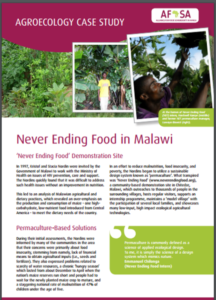
According to a 2016 report from the Food and Agriculture Organization of the United Nations (FAO), entitled “Family Farming in Sub-Saharan Africa,” it states that: “In Malawi, family farms possess about 1.2 hectares per household.”[15] The farm that my wife and I manage (Never Ending Food) is also 1.2 hectares in size. This means that our efforts to demonstrate the incredible potential that Malawi has to bring an end to problems of food and nutrtion security is very much in line with the amount of land that the majority of people in Malawi are currently working with.
Our farm operates on agroecological principles. We rely upon the use of ‘Integrated Pest Management’ (IPM) strategies to eliminate the need for toxic chemicals, we heal the soil to eliminate the need for synthetic fertilizers, we manage and harvest our water to mitigate the effects of floods and drought, and we grow over 200 highly-nutritious and diversified foods providing seasonal, perennial, and local solutions to food and nutrition security. We have been able to show, first-hand, how low-input—often free—sustainable solutions may be achieved.
Agroecology strives to design agricultural systems which work in harmony with natural ecological systems. In 2011, the United Nations released a report on the benefits of Agroecology, stating that: “Based on an extensive review of recent scientific literature, the report demonstrates that agroecology, if sufficiently supported, can double food production in entire regions within 10 years while mitigating climate change and alleviating rural poverty.”[16]
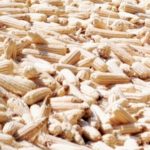
In Malawi, where monocropped agriculture has been pushed predominantly towards the over-production of maize (corn), we find that people often equate ‘food security’ to ‘maize security’. Malawi currently suffers from unacceptable levels of nutritional ‘stunting’. In 2015 a United Nations report, “The Cost of Hunger in Malawi’, estimated the total annual costs associated with child undernutrition to be US$ 597 million, equal to 10.3% of Malawi’s Gross Domestic Product.[17] Many people believe that countries, like Malawi, are continually facing hunger and famine, but just the opposite is true. In 2005, the government of Malawi launched the ‘Farm Input Subsidy Program (FISP)’ which has spent millions of dollars to subsidize the high costs of synthetic fertilizers. This program worked. From 2006 to 2014, Malawi over-produced ‘food’, but one food, from one food group, giving the nation one limited set of nutrients. Despite having maize surpluses (some years close to a million metric tons in excess of the nation’s staple-food requirements), there was little-to-no corresponding reduction of the nutritional ‘stunting’ rates. Throughout the world, governments are now spending billions of dollars to subsidize monocropped agriculture, but as agriculture is failing nutritionally, these same governments are forced into spending billions of dollars to subsidize nutritional treatments (through fortification, supplementation, and medicinal programs). In 2012, the Malawian government received a $5 million dollar donation from Irish Aid, UNICEF, and USAID to fortify sugar with vitamin A[18]. Malawi faces deficiencies in most micronutrients (such as vitamin A and iron), often resorting to health centers and fortification programs to provide these nutrients in medicinal form, yet the country is rich in natural sources of these nutrients which are being overlooked, over-shadowed, and ignored by the push to only produce and eat a limited handful of crops.
Monsanto makes the claim in ‘Let’s Dish!’ that genetic engineering is needed to mitigate the effects of climate change. They clearly state that: “There is a broad consensus in the scientific community that climate change is happening,” but they fail to mention that the current industrialized food production system is estimated to be responsible for upwards of 50% of all greenhouse gas emissions, as reported by the Wall Street Journal.[19] Suggesting that an increase in monocropping and genetic engineering is the cure, when it is actually the disease, is a bit like trying to treat alcoholism with alcohol. They also state that, “drought-tolerant maize is already improving lives in Africa”. Engineering drought-tolerant seeds, while ignoring sustainable solutions to mitigate the effects of climate change (such as using traditional open-pollinated and naturally drought-tolerant seeds, healing the soil, harvesting water, mulching, using cover-crops, diversifying production systems, etc.) is short-sighted and misguided.
Last year (2016) Malawi experienced a drought, which saw long gaps of up to two weeks between periods of rainfall. Farmers who cared for their soil, managed their water, and diversified their crops did very well, despite the so-called drought. The picture below shows two fields in our area of Malawi. Both pictures were taken on the same day, the fields are about 100 meters apart from each other, and both fields received the same amount of rainfall. The picture on the left shows one of our interns standing in his neighbor’s monocropped maize field, where the soil has been neglected and the hybridized maize has become dependent upon the application of synthetic fertilizers. The picture on the right is that of our intern’s own field, which is 100% organic, mulched, integrated with diverse crops, and planted with free open-pollinated seeds (his monetary production costs were zero). Newspapers are reporting that up to 6 million Malawians are now facing food insecurity this year because of the over-reliance (and failure) of one crop—maize (corn)—which was introduced to the African continent and has served to marginalize many well-adapted and highly-nutritious traditional crops. The images speak for themselves:
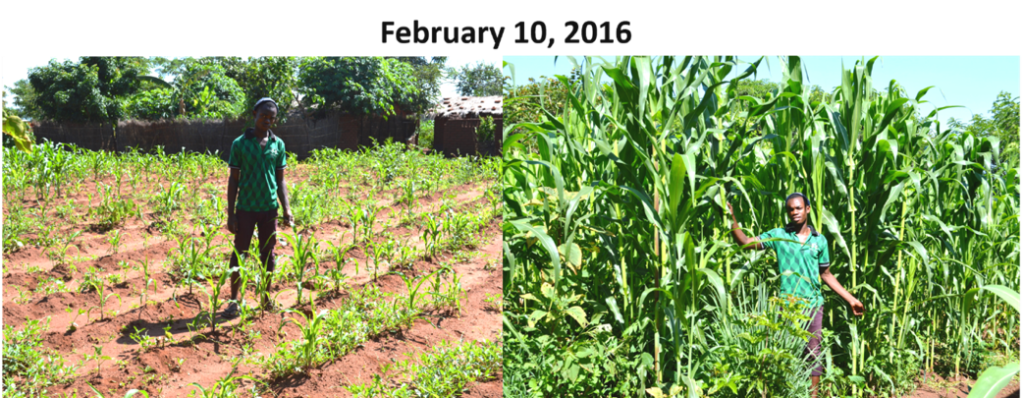
As bio-diversity is increasingly removed from our agricultural production systems, problems arise. When habitat is eradicated, natural predators are eliminated which leads to imbalances in pest populations. Monsanto attempts to ‘compensate’ for this loss by genetically engineering plants which are inherently toxic. Here again, we find the claim being made that genetically engineered crops ‘decrease’ the use of pesticides, when in fact, they are relying on the ‘out of sight, out of mind’ mentality. Putting the pesticide into the plant does not eliminate the pesticide, it simply hides it better. The majority of these crops contain Bt (bacillus thuringiensis) protein crystals. Bt is a naturally occurring bacteria that has long been used, even in organic agriculture, to help with pest control. The major difference is that when used as an external application, Bt is quickly broken down in the UV sunlight and washes off easily with rain, irrigation, and food preparation, seldom making it to the level of human consumption. When it is genetically engineered directly into the plant, this breakdown does not occur, and now we have direct-to-consumer GMO foods which carry the Bt toxin (most commonly Bt-corn and Bt-soybeans). Bt works by attacking the gut cells of insects, perforating the intestinal gut lining, and causing the eventual death of the insect. Not surprisingly, we are seeing a drastic increase in inflammatory and digestive diseases since the introduction of GMOs in the late 1990s. In one study just on the hospitalization of people under the age of 20, the Journal of Investigative Medicine found a 65 percent increase in IBD [inflammatory bowel disease] hospital discharges from 2000 to 2009.[21]
Industrial agriculture systems are often referred to as ‘conventional’ agriculture, but a more appropriate term would be ‘compensation’ agriculture, as we find the use of chemicals, synthetic fertilizers, and genetic engineering being used to ‘compensate’ for problems that we—as humans—are creating. Profit-driven proponents of genetic engineering like to make the claim that their products are designed to use less chemicals, when in fact, just the opposite is true. In 2013, Forbes Magazine ran an article entitled, ‘GMO Crops Mean More Herbicide, Not Less’, in which they wrote: “Food & Water Watch found that the “total volume of glyphosate applied to the three biggest GE crops — corn, cotton and soybeans — increased 10-fold from 15 million pounds in 1996 to 159 million pounds in 2012.” Overall pesticide use decreased only in the first few years GE crops were used (42 percent between 1998 and 2001) and has since then risen by 26 percent from 2001 to 2010. By 2011 there were also three times as many herbicide-resistant weeds found in farmer’s fields as there were in 2001. This has meant huge profits for agribusinesses developing and selling genetically engineered seeds, herbicides and pesticides. Seed revenues have septupled (increased seven fold) since 1998.”[20]
Advocates for truly sustainable agricultural systems, who are opposed to the use of genetic engineering to ‘compensate’ for the problems being caused by industrialized agriculture, are often accused of being ‘anti-science’; yet most are calling for far more research to be done before releasing these artificially-created genetically-altered species into the earth’s ecosystems. The suffix ‘-cide’ (as in pesticide, herbicide, fungicide, etc.) comes from the Latin ‘-cida’ which means ‘death’ or ‘killer’. Instead of fostering systems of life, agriculture has chosen to tread a path of death and destruction. The latest endeavor being used by genetic researchers, which is highlighted in ‘Let’s Dish!’ is the use of ‘CRISPR’ technology. This is the technology behind the current ‘gene drives’ which are being used to sterilize—and therefore—eradicate entire species of mosquitoes[22], and are even being looked at to wipe out highly nutritious vegetables, such as Palmer amaranth. Amaranth seeds are high in protein and fiber, and their leaves are high in vitamin A and iron, as well as being good sources of iron, calcium and niacin.[23] The main reason that researchers are looking at using CRISPR technology to eradicate this food is because it has become resistant to the use of Monsanto’s glyphosate-based Roundup herbicide[24]. The use of genetic engineering in these examples amount to nothing less than a form of genocide. In Will Durant’s ‘The Story of Philosophy’ he writes: “Science tells us how to heal and how to kill; it reduces the death rate in retail and then kills us wholesale in war; but only wisdom—desire coordinated in the light of all experience—can tell us when to heal and when to kill.”

When crops or animals are placed too closely together, as they are in monocropped fields and confined animal feeding operations (CAFOs), this encourages the outbreak of disease. A March 2017 report from Bloomberg reported that an outbreak of Avian flu on chicken and turkey farms in the United States, “led to the death of more than 48 million birds through mid-2015, either from infection or culling.”[25] In 2014, an outbreak of Porcine epidemic diarrhea virus (PEDv) broke out across factory farms in the United States, leading to the death of nearly 10% of the nation’s pig population, or approximately 7 million pigs.[26] Similar outbreaks of disease are now being experienced in crops, where engineering is being promoted as the ‘cure’ (e.g. papayas, bananas, cassava, sweet potatoes, etc.). Here again, one finds that the worst outbreaks are occurring in monocropped production systems. Instead of looking at the root-causes of these outbreaks of disease, we seem to be using genetic engineering to alter our plants and animals to cope with unhealthy systems of agriculture. This wouldn’t seem to be the most prudent, nor sustainable, path to a brighter future.
Monsanto’s propaganda-driven advertisement ‘Let’s Dish!,’ highlights one of their employees, a clinical dietitian named Milton Stokes, who, when asked if genetically engineered foods should be labeled, made the claim that, “They aren’t different nutritionally from conventionally grown foods, so no cause for labeling.” There are a couple of things wrong with this statement. First of all, genetic engineering is a very new technology and its impacts, safety-regulation, and labeling concerns have not yet been fully explored. No consensus has been reached regarding their safety[27], no one-size-fits-all regulation will cover this rapidly transforming science, no one can say with 100% certainty what the long-term effects of releasing these newly created species into ecosystems that have evolved over millions of years will be, and the argument of GMOs being ‘substantially equivalent’ to conventional foods should have been dismissed the moment the first patent for a genetically engineered crop was issued. The genetically engineered plants and animals that are currently in agricultural use have human and environmental health concerns, and should be labeled accordingly. ‘Roundup Ready’ crops are engineered to withstand direct applications of glyphosate herbicide, which the World Health Organization classified as a ‘probable carcinogen’[28]. Roundup has also been found to disrupt ecosystems to the point that since the 1990’s almost a billion Monarch butterflies have vanished, resulting in almost a 90% decline in this important pollinator’s population.[29] Consumers should have a right to know what they are putting into their bodies and what types of systems their money is being used to support. Labeling of genetically engineered crops carries health, environmental, economical, and ethical implications—all of which need to be taken into consideration.
The second problem with the claim that genetically engineered foods ‘aren’t different nutritionally’ is that now genetic engineering is being used to ‘compensate’ for the loss of nutritional diversification within monocropped systems by engineering nutrients (such as vitamin A) into crops where it doesn’t naturally occur. This would definitely qualify as being ‘nutritionally different,’ and it doesn’t address the entirety of the nutritional problems. When malnutrition arises, it seldom remains isolated to a single nutrient such as Vitamin A, but affects a wide range of nutrients such as iron, Vitamin E, Vitamin B12, selenium, magnesium, calcium, protein, etc. The genetic alteration for nutrition, along with nutritional fortification and supplementation programs are very often ‘Band-Aid’ approaches. They cover up the problem without addressing the root-causes. These so-called ‘emergency responses’ have now become long-term strategies, which are often expensive, donor-dependent, and unsustainable. Many of these approaches continue to promote an over-reliance on the limited production and consumption of staple foods, where the production and consumption of natural and highly-nutritious foods are greatly diminished, and then these losses are ‘compensated’ for through the use of expensive artificial interventions. One study from Phillips-McDougall, an analytical consulting agency for the agrochemical and biotech industry, showed that the average cost associated with the discovery, development, and authorization of a single biotechnology derived crop trait between the years of 2008-2012, was $136 million dollars.[30]
‘Let’s Dish!’ attempts to makes it sound like farmers have been using genetic engineering to alter plants for over 10,000 years. This is a false narrative that the genetic engineering industry likes to promote to make it sound like genetic engineering is no different than conventional breeding. While it’s true that farmers have selected seeds with desired genetic traits for thousands of years, there are natural limitations on what can—and can’t—be done. For instance, in nature, a red bean may cross with a white bean (similar species) to create a red-and-white speckled bean, but the same bean cannot cross with a tomato (different species). Genetic engineering now allows for the crossing of genetic material from completely unrelated species, and in some instance completely unrelated kingdoms, of plants and animals. Nowhere in natural evolutionary processes would a lamb ever cross with a jellyfish, but in France an experimental lamb with the genetic material of a jellyfish somehow escaped all of the regulatory safeguards, and made its way into the public food system.[31]
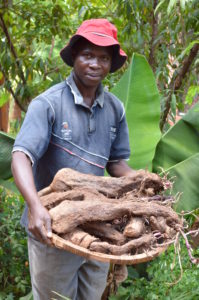
The advertorial also tries to make the case that genetically engineered crops are leading to increased yields. This again, is a falsehood. In 2016, the New York Times reported that: “genetic modification in the United States and Canada has not accelerated increases in crop yields or led to an overall reduction in the use of chemical pesticides.”[32] When one looks at yields, there are many ways that we could be increasing overall food production. In Malawi, a good harvest of maize currently stands around 2,000-3,000 kg/hectare, but in the incessant push to increase maize yields, we have been overlooking extremely high-yielding local crops. There is a local yam in Malawi (Dioscorea species) which commonly grows to be 20 kg or larger. A hectare of land is 100 meters by 100 meters (or 10,000 square meters). If a farmer were to take 2 meters by 2 meters of his or her land (4 square meters) and plant a yam in the middle of it, this would allow for 2,500 yams within a hectare. At 20 kg per yam, this amounts to 50,000 kg of food per hectare, or 47,000 kg more than a good harvest of maize. Yams vines like to climb trees, so fruit and nut trees could be added to this system, while still leaving room for the incorporation of additional vegetables, legumes, staples and oil crops—all serving to boost overall yields even higher.
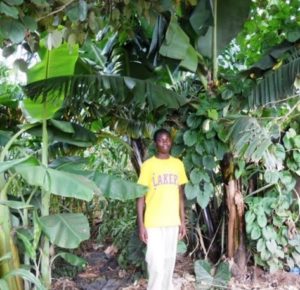
If we want to ensure food and nutrition security, we need to begin to protect the entirety of the ecosystems in which they grow. We also need to do a much better job of re-connecting nutrition (and nutritionists) with where our food comes from, how it’s produced, and how these systems can be designed to provide safe, toxin-free, diversified, highly-nutritious, low-cost, and easily-accessible food which is available to every single person on the planet. Sustainable, healthy, natural, and agroecological solutions exist (which, as cited earlier, can “double food production in entire regions within 10 years while mitigating climate change and alleviating rural poverty”), but in order to achieve a true ‘green revolution’ we need to learn how to work with nature, not against it. Monsanto is currently pushing many countries towards the adoption of their third-generation of genetically engineered cotton (known as Bollgard III), which has triple-stacked the toxicity within the cotton seed because the first two generations have become ineffective to the pests they were engineered to kill[33]. And, as Monsanto’s glyphosate-based Roundup herbicide is beginning to lose its effectiveness to herbicide-resistant weeds, it has led other companies (such as Dow Chemical) to launch a line of corn and soy which have been genetically engineered to withstand a combination of glyphosate and the even more toxic 2,4-D (which was an active ingredient in ‘Agent Orange’ used during the Vietnam War)[34]. So the question becomes: How much toxicity are we going to allow to be engineered into our production systems, and how much nutritional diversity are we going to allow to be eradicated, before we come to the conclusion that perhaps we are careening down a dead-end road with companies like these in the driver’s seat?
For a downloadable PDF version of this article, you can click here: Achieving Food and Nutrition Security…Without Monsanto
[1] http://www.todaysdietitian.com/
[2] http://viewer.zmags.com/publication/9130b46e#/9130b46e/1
[3] https://neverendingfood.org/
[4] http://www.eatrightpro.org/resource/practice/position-and-practice-papers/position-papers/nutrition-security-in-developing-nations-sustainable-food-water-and-health
[5] http://www.todaysdietitian.com/newarchives/030413p32.shtml
[6] https://www.theguardian.com/global-development/2016/dec/17/hungry-ate-water-lilies-southern-africa-food-crisis-dozen-dishes-crop-failure-drought-john-vidal
[7] http://www.huffingtonpost.com/danielle-nierenberg/malawis-real-miracle_b_428171.html
[8] http://www.americanbar.org/publications/human_rights_magazine_home/human_rights_vol37_2010/winter2010/the_politics_of_stigma_starving_in_a_land_of_plenty.html
[9] https://www.permaculture.co.uk/issue/winter-2014
[10] https://aidsfree.usaid.gov/sites/default/files/permaculture_design_ovc.pdf
[11] https://foodtank.com/news/2015/07/sixteen-successful-projects-highlighting-permaculture-use/
[12] http://www.worldcat.org/title/greening-of-food-farming-and-agriculture-greening-the-food-on-your-plate/oclc/830354211
[13] http://afsafrica.org/wp-content/uploads/2015/11/Never-Ending-Food-in-Malawi.pdf
[14] http://www.dictionary.com/browse/sustainability
[15] http://www.fao.org/3/a-i6056e.pdf
[16] http://www.srfood.org/en/report-agroecology-and-the-right-to-food
[17] https://www.wfp.org/content/cost-hunger-malawi
[18] http://www.nyasatimes.com/malawi-spends-5m-for-vitamin-a-sugar-fortification-programme/
[19] http://blogs.wsj.com/numbers/how-much-of-worlds-greenhouse-gas-emissions-come-from-agriculture-1782/
[20] https://www.forbes.com/sites/bethhoffman/2013/07/02/gmo-crops-mean-more-herbicide-not-less/#408a0e1a3cd5
[21] https://www.sciencedaily.com/releases/2013/06/130625141208.htm
[22] http://www.telegraph.co.uk/technology/2016/03/14/genetically-modified-mosquitos-released-into-the-wild-to-wipe-ou/
[23] http://www.aihd.ku.edu/foods/Pigweed.html
[24] https://www.nytimes.com/2016/06/09/science/national-academies-sciences-gene-drive-technology.html?_r=0
[25] https://www.bloomberg.com/news/articles/2017-03-06/bird-flu-found-in-tennessee-flock-near-top-u-s-chicken-states
[26] http://news.nationalgeographic.com/news/2014/05/140501-pigs-virus-meat-prices-food-science-health/
[27] http://www.ensser.org/increasing-public-information/no-scientific-consensus-on-gmo-safety/
[28] http://www.thelancet.com/journals/lanonc/article/PIIS1470-2045%2815%2970134-8/abstract
[29] http://www.pbs.org/newshour/rundown/nearly-billion-monarch-butterflies-vanished-since-1990/
[30] https://croplife.org/wp-content/uploads/2014/04/Getting-a-Biotech-Crop-to-Market-Phillips-McDougall-Study.pdf
[31] http://www.telegraph.co.uk/news/worldnews/europe/france/11693029/Genetically-modified-jellyfish-lamb-accidentally-hits-French-dinner-plates.html
[32] https://www.nytimes.com/2016/10/30/business/gmo-promise-falls-short.html
[33] http://news.agropages.com/News/NewsDetail—16886.htm
[34] http://www.centerforfoodsafety.org/press-releases/3536/epa-approves-new-24-d-herbicide-blend-paving-way-for-controversial-ge-crops#
